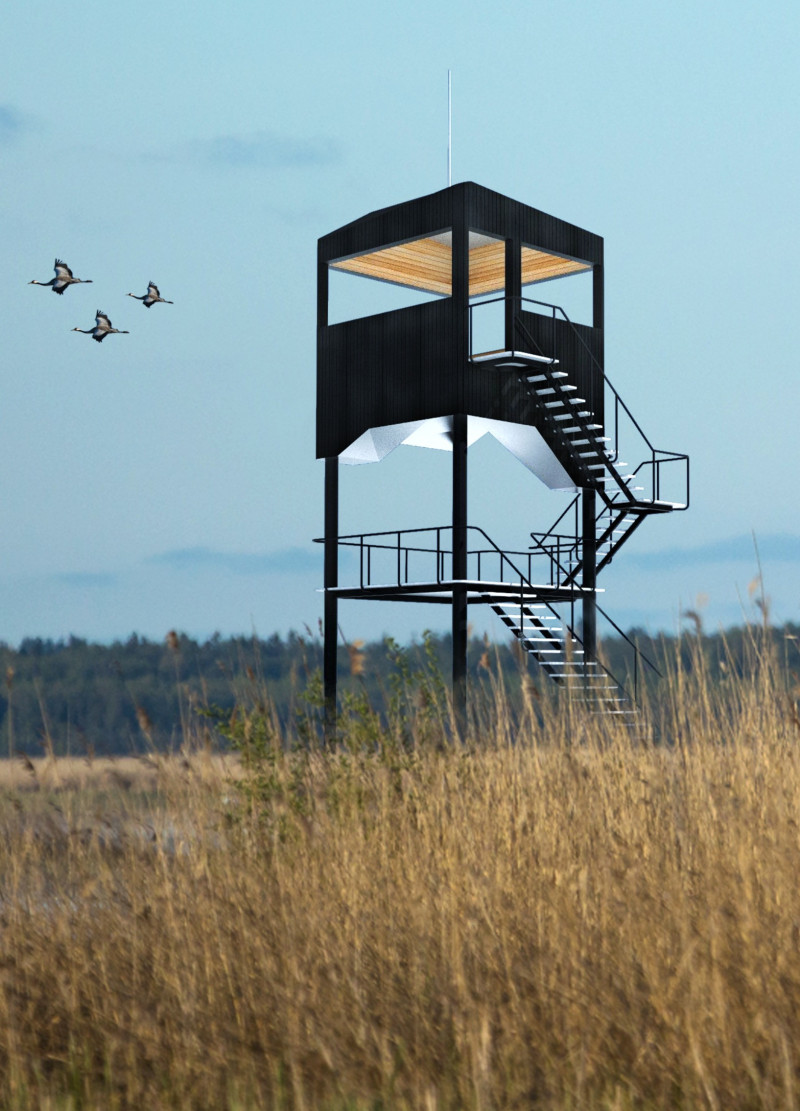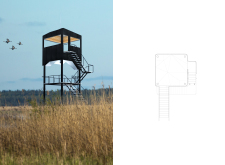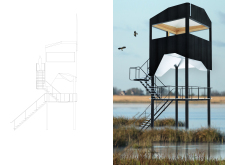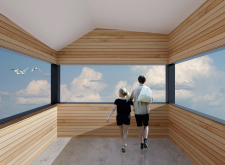5 key facts about this project
The tower is characterized by its distinctive rectangular cuboid shape complemented by a cantilevered overhang. This architectural choice enhances both form and function, providing shelter from the elements for those beneath it. Visitors ascend the structure via a spiral staircase that is strategically positioned around the external facade, facilitating safe access to the observation deck while also enhancing the visual experience as users navigate their way upwards.
Materiality plays a vital role in the project's overall identity. The predominant use of blackened wood for the outer cladding allows the structure to harmonize with its natural surroundings, echoing the shades of the nearby marsh vegetation. This approach not only reinforces the building's connection to the landscape but also embraces a minimalist design ethos that prioritizes simplicity and elegance. The structural frame and staircase are constructed from galvanized steel, ensuring durability and providing a contemporary contrast to the warmth of the wooden elements. Concrete is utilized for the base and landing platforms, establishing a solid foundation that enhances the stability of the elevated tower.
The design incorporates large glass panels in the observation deck, which allow for expansive views of the marshland, inviting natural light into the space. This transparency fosters an open atmosphere, encouraging users to observe wildlife unobtrusively. The interior space is finished with wooden slats that offer a sense of warmth while maintaining visibility in every direction, further enhancing the overall user experience.
Unique design approaches characterize this project and set it apart from conventional observation facilities. One notable aspect is the tiered design, which not only creates visual interest but also invites exploration by allowing users to experience their surroundings at varying heights. The cantilevered roof serves a functional role in directing rainwater runoff away from entry points, showcasing a thoughtful engagement with weather conditions. Additionally, the architectural integrity of the tower aims to educate visitors about local wildlife and habitats through thoughtfully integrated informational displays.
The project responds adeptly to its geographical context, providing a landmark that attracts both locals and tourists. This engagement with the community enhances visitors' appreciation for the natural environment, forging a connection between architecture and ecology. The tower embodies a modern approach to sustainable architecture, utilizing locally sourced materials to minimize the ecological footprint throughout the construction process.
In summary, this observation tower is a notable architectural project that effectively merges design and purpose with its environment. Each detail has been considered to ensure a seamless integration into the wetland landscape while providing an inspiring and educational experience for its users. To gain deeper insights into the architectural plans, sections, and overall design ideas, the reader is encouraged to explore the project presentation, where further details illuminate the vision and intention behind this remarkable undertaking.


























